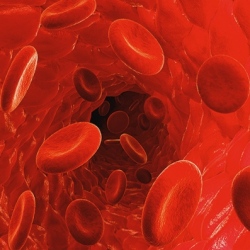
Leon Bellan, an assistant professor of mechanical engineering at VU, has been tinkering with cotton candy machines after realizing the machines were perfect at spinning out tiny threads that resembled human capillaries. Those tubes were then pumped full of cells along with the nutrients they needed to grow.
Bellan reported that after a week, 90 percent of the cells in the tubes were alive and functional. This method has a distinct advantage over another common method of creating capillaries in gels, known as the "bottom-up" process. In such a process, cells are cultured in the gel and eventually spontaneously grow their own capillaries. But the process takes time, which means that new layers can’t be placed into the budding tissue before the capillaries are formed because there’s a chance the cells in the middle of the structure could die off.
Because Bellan’s method, known as a "top-down" approach, can form the capillaries all at once, thicker tissue structures could theoretically be possible. "Some people in the field think this approach is a little crazy," said Bellan, "But now we’ve shown we can use this simple technique to make microfluidic networks that mimic the three-dimensional capillary system in the human body in a cell-friendly fashion. Generally, it’s not that difficult to make two-dimensional networks, but adding the third dimension is much harder; with this approach, we can make our system as three-dimensional as we like."
Bellan and his colleagues are now looking into ways to tailor the process to mimic capillaries in various types of tissues. "Our goal is to create a basic ‘toolbox’ that will allow other researchers to use this simple, low-cost approach to create the artificial vasculature needed to sustain artificial livers, kidneys, bone and other organs," he said.
